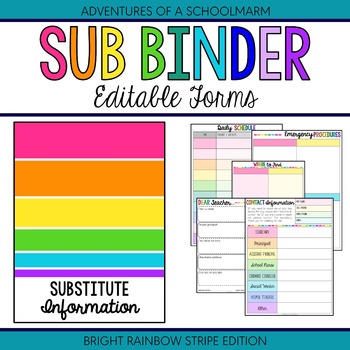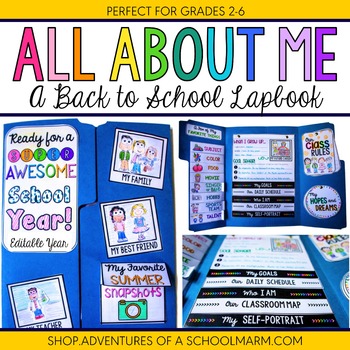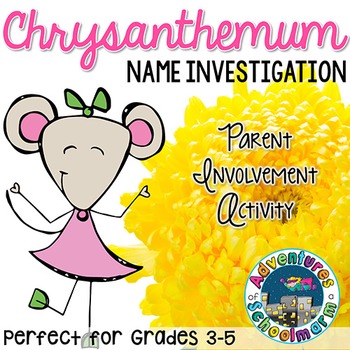While I genuinely love different aspects of each, my heart is with self-contained teaching. Here are a few tips to make the most of your self-contained school year!
1.) Remember you are still part of a TEAM.
Just because you are teaching every subject on your own doesn't mean you can't benefit from being part of a collaborative team. While team experiences can vary, there are a lot of things ways you can benefit from one another.
Team Meetings with Collaborative Planning: One team I worked on met weekly to brainstorm ideas for planning our lessons for the following week. We sketched out lesson overviews together, and then were responsible for writing the more detailed plans ourselves to make sure they fit our classrooms. This was my favorite way to plan because I could benefit from the "meeting of the minds" to share ideas and strategies, but ultimately I got to select what would specifically work best for my students and implement in my own way. This especially worked well for us because we didn't always see "eye to eye" on how we wanted to implement lessons within our own classrooms. We could benefit from one another's strengths, but also have the freedom to do what was best for our own students.
Sharing the Planning Load by Departmentalizing: While I have not done this myself, I have worked with teams that shared the planning load entirely. Everyone taught every subject, but one person planned math, another planned reading/writing, and another planned science/social studies. Detailed lesson plans and copies for the entire grade level were due by Wednesday of the previous week.
Team Meetings with Collaborative Planning: One team I worked on met weekly to brainstorm ideas for planning our lessons for the following week. We sketched out lesson overviews together, and then were responsible for writing the more detailed plans ourselves to make sure they fit our classrooms. This was my favorite way to plan because I could benefit from the "meeting of the minds" to share ideas and strategies, but ultimately I got to select what would specifically work best for my students and implement in my own way. This especially worked well for us because we didn't always see "eye to eye" on how we wanted to implement lessons within our own classrooms. We could benefit from one another's strengths, but also have the freedom to do what was best for our own students.
- POSITIVES: I really valued having this time to share data and look for common trends across the grade level. It was also beneficial to be able to bounce ideas off one another and share resources.
- CHALLENGES: We were still responsible for writing our own detailed lesson plans. For me, sometimes this meant I didn't have any because I would just use the outline. (Just being honest!)
Sharing the Planning Load by Departmentalizing: While I have not done this myself, I have worked with teams that shared the planning load entirely. Everyone taught every subject, but one person planned math, another planned reading/writing, and another planned science/social studies. Detailed lesson plans and copies for the entire grade level were due by Wednesday of the previous week.
- POSITIVES: One benefit is that you only have to plan for a specific subject, so you can really specialize in the content. This gives you more time to dig in deep and design quality lessons.
- CHALLENGES: Instructionally, it would be a challenge if your students move at a different pace than the teacher plans or if you don't have the same teaching philosophy as your team mate(s). Professionally, it can be a challenge if someone isn't pulling their weight or gets behind on deadlines. You also have to have very clear expectations about when plans are due and trust that your teammates will follow through, or this can breed animosity amongst your colleagues if not dealt with swiftly.
2.) Take advantage of the time to connect disciplines thematically.
One of my favorite things about being a self-contained elementary teacher is that I have a lot more freedom to use my day as I see fit. Need more time for that math lesson? No problem! Want to focus more in-depth on a novel for a week? You've got the time.
Just remember that you don't have to have a theme for every single week of the school year. Start small with even one interdisciplinary unit, then build from there. After you have had the chance to teach the entire school year, you will have a much better understanding of the scope and sequence of your subjects and how they best fit together. I feel like it took me until my 3rd year teaching the content to really find my groove. But don't let being overwhelmed stop you from trying at least one more connected unit for the school year. The kids will love it and retain so much information!
Just remember that you don't have to have a theme for every single week of the school year. Start small with even one interdisciplinary unit, then build from there. After you have had the chance to teach the entire school year, you will have a much better understanding of the scope and sequence of your subjects and how they best fit together. I feel like it took me until my 3rd year teaching the content to really find my groove. But don't let being overwhelmed stop you from trying at least one more connected unit for the school year. The kids will love it and retain so much information!
3.) Take time to truly deepen the relationships in your classroom and build a "family".
The sense of family and connectedness is my absolute favorite reason why I love self-contained teaching in the elementary setting! Whenever I have only taught a subject and rotated students through, I never felt like I had enough time with them. We also didn't have as many opportunities for down-time when we could have more personalized conversations. If you have your students all day everyday, take advantage of it! One of my favorite ways to build community is to start and end my day with a "Family Meeting" on the carpet.
- Morning Meeting: Morning meeting is a special time to greet one another and get to know each other. When I implemented Morning Meetings, in time, my students were better at coming to school on time. They didn't want to miss this time! And if something got in the way of being able to have our Morning Meeting, the kids would let me know about it. They missed it if we couldn't do it, which means I know they really valued it!
- Afternoon Meeting: This is the perfect time to reflect on our day and our choices. Have students share their favorite thing they learned today. Take a moment to celebrate positive character traits, like giving recognition for a student that persevered through a challenge.
- Class Traditions: Class traditions are such a fun way to reinforce a sense of family and community. Think of little things that make your class special and unique. Create class chants or cheers. Make special moments, like Brain Kisses for great thinking or Warm Fuzzies for displaying positive character traits. Incorporating those little unique things are going to be what makes your students feel like they are a part of a community that is uniquely THEIRS.
You May Also Like:
- How to Mentally Prepare for Your First Year Teaching - Practical ideas on how you can get ready this summer for your new teaching position!
- Building Positive Classroom Culture - Learn the one magic ingredient for positive classroom culture, as well as specific guidelines and strategies to implement
- 10 Things I Wish I Knew Before My First Day Teaching - Learn from my mistakes so you can be better prepared for the unexpected things on your first day in the classroom!
- 10 Classroom Routines You Need Immediately - Have you overlooked these 10 important classroom routines?
- Join our private >> Facebook group << for new teachers!
You Should Also Check Out...
For this collaborative blog series, Dr. Tonja Irvine from Resource to Desk has shared about her favorite way to teach - departmentalized, team teaching! Check out her post here: 3 Tips if You Team Teach.
















No comments